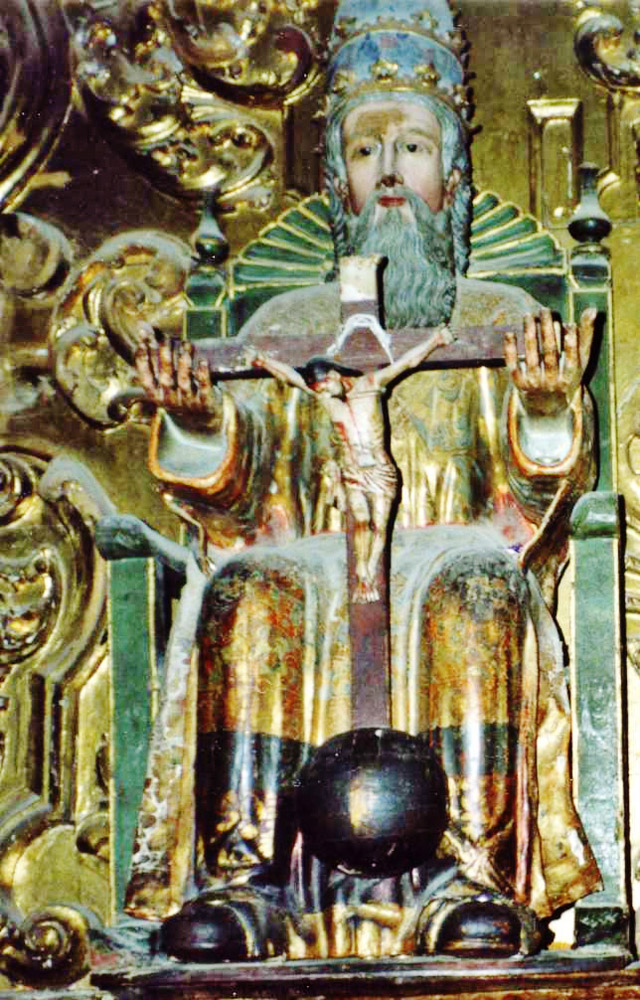Trinity (Throne of Mercy):
This is the typical representation of the
Trinity in the older Oaxaca churches. The dove is missing,
but there is a bare place for it at the top of the cross.
The statue seems to have been made for another base: the
Father's shoes stick out beyond the base. Their soles are
of unfinished wood, although the tips of the soles have
been gessoed and painted. The beard is carved and
stylized, with flat, symmetrical curls. The polychrome
robe has a simple crosshatched pattern. The throne is a
relatively simple chair of green painted wood, the back
topped by a fantail design and the uprights by turned
knobs.
Basis for Identification: Crucifix
on a mappa mundi
orb held up by the
Father, seated and in a triple tiara.
Site: Church of the
Assumption, Tlacolula.
Location: On a
shelf on the south wall of the east transept of the
Chapel (see note).
Media and
construction: Polychrome.
Eyes: painted. Hair: carved.
Size: About 3½ feet
(105 cm.)
Comparable santos in Oaxaca: Diaz Ordaz,
Mitla, Tamazulapan,
Teitipac,
Teotitlán, Xoxocotlán, Yanhuitlán
1, Yanhuitlán
2.
External Links:
Wikimedia Commons:
Throne
of Mercy in Mexico
Catholic
Encyclopedia: The
Blessed Trinity
Wikipedia: Trinity
Christian Iconography: The
Trinity
Next: Moving over to the west transept, we find a statue of St. Anthony of
Padua
Previous santo
Introduction
to Tlacolula
Santos Home Page
Note: On
this
site,
references to the cardinal directions always assume
that the main altar is at the east end of the church,
the narthex or entry area at the west end, and the two
walls
of the nave on the
north and south. (The
nave is the long central section.)
In the
case of the Chapel of the Lord of Tlacolula, which is
at right angles to the south wall of the church, the
altar is thus at the south end and the transept (the
two wings that give the building the shape of a cross)
comprises an east and west section. Actual
orientations may differ.
The photo shown here is licensed under the
Creative Commons Attribution-Share Alike 3.0 Unported
license. You are free to share or remix it on two
conditions: first, that you attribute it to the
photographers, Claire and Richard Stracke, without
implying any approval of your work on their part;
second, that if you alter, transform, or build upon
this photo, you may distribute the resulting work only
under the same or similar license to this one.
|


